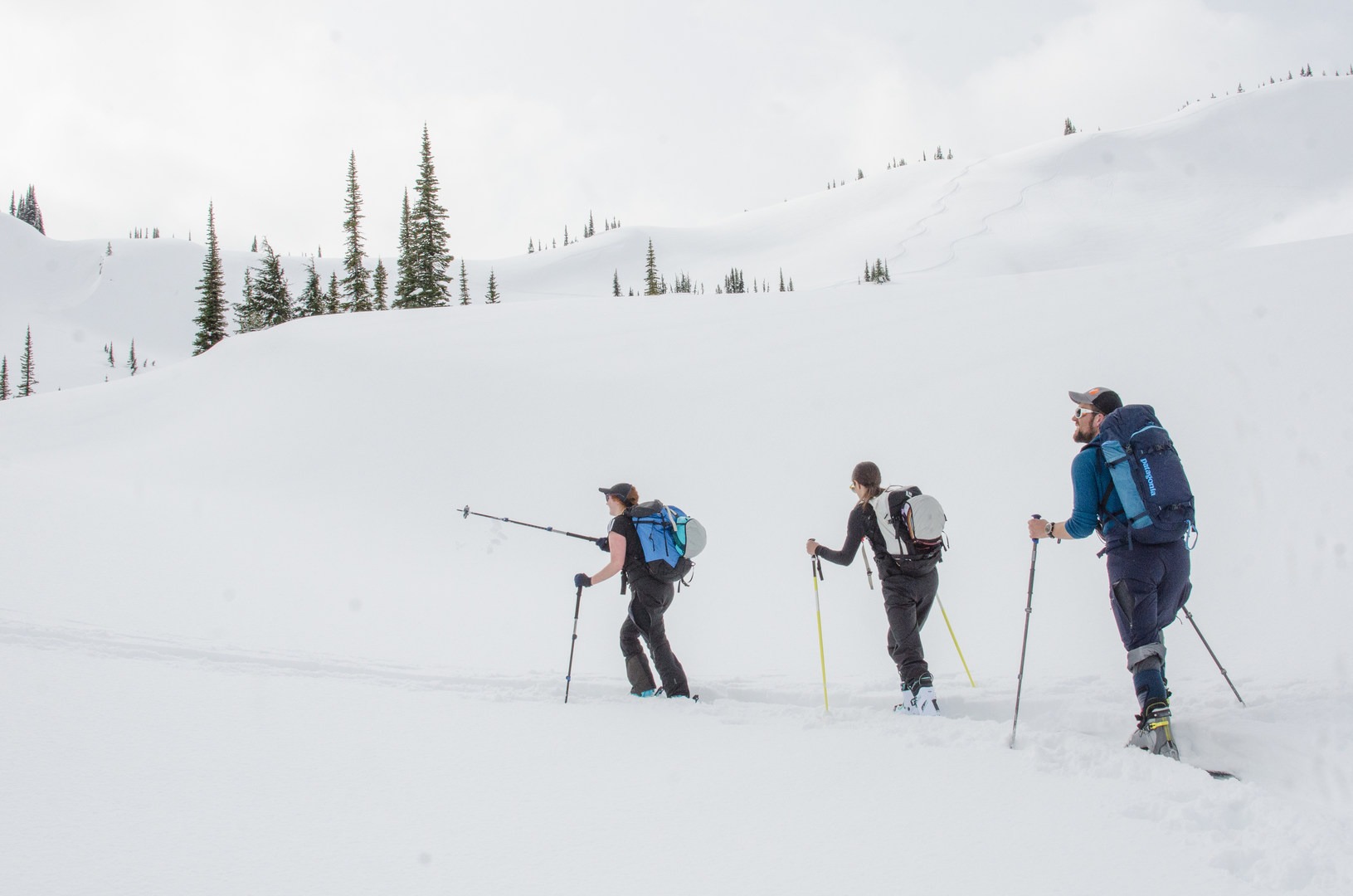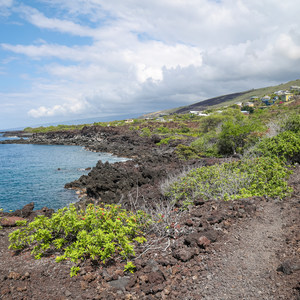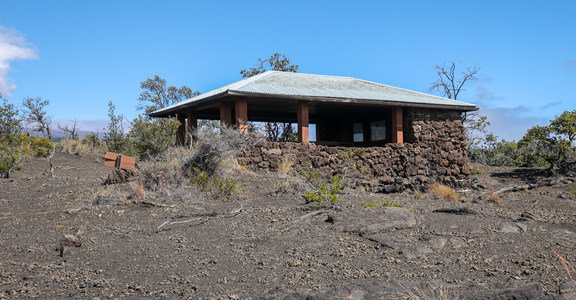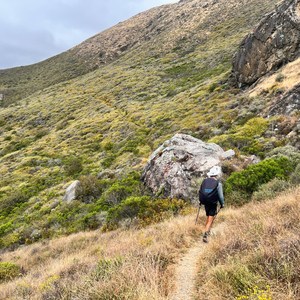You are here
Leaves are turning, snow is starting to fall in some parts of North America, and folks are tuning their edges sharp. I work as a product specialist at Mountain Equipment Co-op, and this time of year I inevitably get calls at my job from people trying to find out more about how to get into backcountry skiing.
There are four essential steps to getting into backcountry skiing:
- Learn to ski
- Take an avalanche safety course
- Go with more experienced people
- Trip prep and planning
Step 1: Learn to ski well
It's impossible to deny the appeal of the backcountry in winter. Incredible distances easily traversed and thousands trails with no right or wrong way. It has all the beauty of hiking, but now the descent is the best part. That’s why we do it. It's fun.
Hopefully it isn't a surprise when I also say: It’s stupid dangerous. There are few sports where the line between low risk and high risk can be so close and yet so hard to see. The reality is you may very well find yourself in an extremely high-stakes situation. Before you go into the backcountry, you need to ask yourself: Can I ski or ride 300 meters of chunky, awful 28-degree slopes quickly and safely in two minutes? Am I capable of saving a friend caught in an avalanche?
These days there are more and more people seduced into trying to teach themselves to ski in the backcountry. But the backcountry is far too risky a place to be learning to turn properly. While there are low-risk ski zones in the backcountry, you are still exposed to the risks of tree wells, cliffs, and other hazards that aren’t always easily avoided, particularly for newer skiers. But if one can’t ski well and fast, they put their friends at risk. When I run introduction to backcountry skiing courses for the BC Mountaineering Club, we use steeper blue mogul runs to test downhill abilities. The cruddier and chunkier the better. It’s a great low risk way to make sure you’re ready for the terrain you may find yourself in. If you aren’t ripping blues, I encourage you to spend a few more weeks at the resort. Take a lesson, or try some harder terrain. The development of backcountry skiing and riding skills shouldn't be rushed.
Step 2: Take a course
Avalanche Safety Training (AST), or AIARE as it is known in the U.S., isn’t just a good idea, it should be considered mandatory. Having some knowledge is good, but one of the most important skills is a standard communication method in an emergency. When sh*t hits the fan, precious seconds are saved by having simplified procedures that everyone is familiar with. In Canada, the social standard has moved to a place where most people won’t go on trips with folks who don’t have an AST. And the results speak for themselves.
You can get out skiing once you've completed the course, but it’s a good idea to top up your knowledge. Speaking events are common in avalanche prone areas. Websites like Avalanche.ca, Mountain Condition Report, and the ACMG often post updates on conditions, and reading these can improve your comfort with the terms and terrain types out there.
The AST/AIARE 1 programs are just the beginning. They are not designed to teach you route finding or whether or not a line is safe to ski. They give you the skills to confirm a route is not safe to ski and point out the most obvious risks. If you want to ski steeper lines, take other people out, or get into more challenging terrain, then taking an AST/AIARE 2 in your second year is highly recommended. In fact, that’s how the program was originally conceived: The Level 1 course provides bare bones basics, and the Level 2 course helps you get the most out of skiing.
Early seasons courses book up really fast, so get yours ASAP.
Step 3: Gain experience by getting out
The fun part is often the hardest part. When you’re new, it can be intimidating and difficult to know where to begin. The best and easiest way to figure out where to find good spots to check out is to ask your guide on your AST program to suggest a location and go out with the people from your course.
After that, local clubs or societies can be options. They often have beginner trips and courses. Other times it's a case of finding friends of friends, or even asking around gear shops. Being aware of your risk threshold and being honest and upfront about you skiing ability and backcountry experience will go a long way to helping you find the right group. I have led trips for the BCMC and the ACC, and my biggest pet peeve is people who talk up their ability, turn up, and are a liability. Trip leaders are generally leading to help mentor people, so feel free to ask them questions, but be honest and humble about your abilities. You will have the most fun this way. However, keep in mind that these are often volunteers. Being skeptical and asking questions is always a good idea. Never settle for “Just Trust Me.” Good leaders will address your fears and help explain what is happening.
Step 4: Trip prep and planning
There often places like Zoa Peak, Diamond Head, Bow Summit, and Illumination Saddle that are fairly low risk favorites for newer backcountry skiers. A good rule of thumb is to try and ski lines that look like green runs. Often your local gear shop, forum, or Facebook group can point you in the direction.
If you are sourcing your routes from scratch, you can also look at maps or even Google Earth for possible lines. If you're good with topo maps, you can calculate slope angle in open areas. If not, Caltopo and Gaia GPS Pro have a feature that color codes the slope angle. There is a photo in the description with odd color heat marks. The yellow represents slopes between 27 and 29 degrees, and orange represents slopes that are 30 to 33 degrees. Those are where slopes get to be higher risk. Anything not colored is less than 27 degrees, which is normally fairly low risk in low to moderate conditions.
Make sure to think about the terrain that is above you just as much as the terrain that you are skiing down. Remote triggering is a real danger, especially in interior Rockies snowpack. Staying well away from steep slopes is the simplest way to avoid this risk. Try and only go on low or moderate risk days when you're starting out. It will take a while for the course training to sink in and make practical sense, so be conservative.
The day before I head out, I check the forecast (just like your training), but I also check Mountain Condition Report to see if any slides have been reported and what the guides are calling in. Then I scan the weather on SpotWX, Mountain Forecast . Then I check Windy, normally looking for historical wind data from the past week or so to get an idea where buried windslabs might be hiding. Windslabs are a very underreported feature, but they are often the cause of large slab avalanches. Historical wind data is the best way to gather this information.
So get out, get trained, and get ripping. If you're in the Vancouver, Calgary or Bow Valley area, feel free to reach out and get in touch. I'd be more than happy to point you in the right direction or connect you to local resources.
Bonus: If you want extra knowledge, check out Cherry Bowl, a multi-media dissection of a avalanche rescue.





Comments
Sign In and share them.